
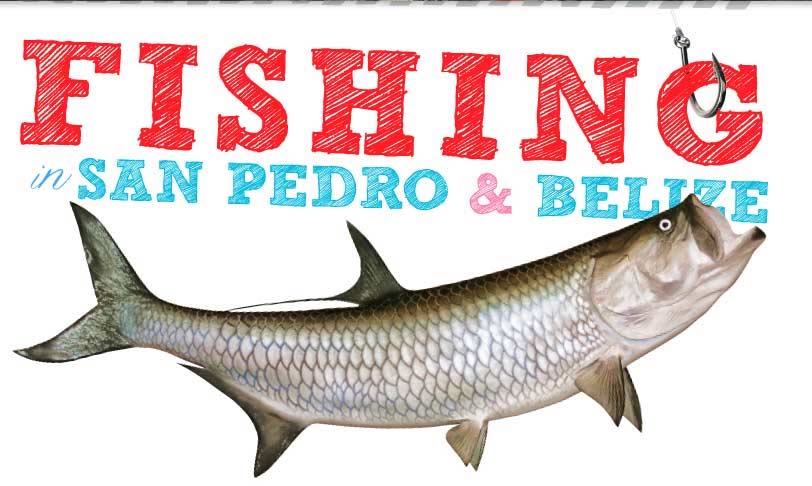
 is a mecca for those interested in fishing. An kinds of fishing spin, fly,
trolling - can be experienced all year long, and the abundance of game fish
guarantees excellent sport. is a mecca for those interested in fishing. An kinds of fishing spin, fly,
trolling - can be experienced all year long, and the abundance of game fish
guarantees excellent sport.
The estuaries, inlets and mouths to the many rivers are known for their tarpon, snook
and jacks. The lagoons and grass flats are known for the bonefish, permit and
barracuda. The coral reefs support grouper, snapper, jacks and barracuda while the
deeper waters off the drop off are home to sailfish, marlin, bonito and pompano.
Fishing is great all along the coast of Belize, from the Port Honduras and Punta Icacos lagoon of Toledo to Rocky Point on Ambergris Caye. Any of the many rivers which empty into the Caribbean along Belize's coasts can guarantee a daily catch. Most of your guides and boatmen speak English so learning where and what to fish will be no problem. The waters surrounding Ambergris Caye abound with a great variety of saltwater fishing and the island boasts some of the best fishing guides in the country. Most types of fish, including bone fish and tarpon, can be caught year-round. Within 15 minutes of leaving the dock, you can be fishing in tidal flats or in blue water hundreds of feet deep. FISHING ON AMBERGRIS CAYE has remained one of the Caribbeans best-kept secrets until recently. The extensive flats, a twenty minute boat ride from the lodge, are picture perfect. Shallow (2-6 feet) and with a whiter than normal sand bottom, these tarpon feeding grounds stretch for over fifty miles and provide the dining room for almost unbelievable numbers of tarpon. Peak periods on the local flats are the months of May through November, though there are fish around 355 days a year, and Winter/Spring months (February, March and April) provide excellent opportunities when the weather cooperates. More importantly, it is uncommon to encounter other anglers once you have left the harbor area. The immense size of these flats, and the lack of fishing pressure has left these tarpon with an very aggressive nature, and they move readily to almost any properly presented fly.

FISHING FROM THE SHORE- I've done well catching bonefish right on the beach right near the rio. During the sunrise of the day i flyfish hitting the areas on the flats bare of turtle grass. Small shrimp imitations, and crazy charlies work out well.
You can fish for bonefish from the flats at the cut just north of San Pedro, from the beaches north of the cut and from the docks and beaches in town and south of town. Caught bonefish just about anytime water conditions were right, any time of day...Water must be calm. Wade fishing with a 7-weight fly-rod, or a light spinning rod is a kick. You can catch more fish off a boat, but wade fishing, or off the end of a pier is relaxing. The area near the cut is pretty good. The various species of fish is pretty good: black snappers, red snappers, bonefish, barracudas, french grunts, and permit. Mr. twister's jigs are awesome. You can use sardines available from at a bait shop immediately side of the airport, there is also a fly shop at El Pescador Resort.... You can fish from the beach and docks in town and on the south side of town beginning about 4:00 PM. We often cooked in the condo and found restaurants very willing to clean and serve my fish for about $5.00 per person. They were especially willing if I had a little extra fish that they could serve to others at full price.
There are many good guides and fishing from a boat is an option. I did it and enjoyed it. You can fish for an hour or more anytime you feel like it with your own gear. By all means, do it!
Looking at my watch and reminiscing on past adventures I turn my attention towards the waters edge a few feet from my beachside breakfast nook. Six thirty two, taking not that my guide and I will be off for an amazing day of fishing on the flats around Ambergris Caye. I've come to Belize once again to embark upon a familiar journey in pursuit of those most worthy of adversaries, the permit, the tarpon, and the bonefish. Drawing me back year after year I once again await yet another day of exploring this plentiful fishery fly rod in hand. For those whom never experienced the fishing in Belize there are a few things I should make clear. While the fishing is generally rated to be excellent all year long. The months of June through early September usher in a few special events that make fishing in Belize and AMAZING EXPERIENCE. The first event is as old as time its self, the spawning season comes around for the bonefish and permit. Both of these favorite flats species are in record numbers and in greater competition for food in such large schools. And my personal favorite, the gargantuos migrating Tarpon whom decide to linger about in the waters around Ambergris Caye in schools at times numbering over a hundred.
Note from a long-time dive operator on the island: While I am stating it is legal with snorkel equipment I would certainly never take a tourist spearfishing and would hope nobody else would. It would not take long to deplete the fishlife it we marketed spearfishing therefore I think it should be left for the locals who have fed their families for generations using this one of many fishing methods.  The guides are very flexible with respect to their schedule, and prefer to begin early or start late depending on the tides. Occasionally that means missing a hot breakfast, or returning at dark for just a quick shower before dinner.
The guides are very flexible with respect to their schedule, and prefer to begin early or start late depending on the tides. Occasionally that means missing a hot breakfast, or returning at dark for just a quick shower before dinner.
Tarpon remain the primary attraction at in the area, although there all the reef species, barracuda, snook, snapper, grouper, and of course the ever-present bonefish and occasional permit. These are really a sidelight, though, because this is tarpon fishing the way everyone dreams that it should be! The flats are situated only a mile or so from the blue water and they are constantly being replenished with fish from the deep. White sand bottoms with occasional patches of turtle grass provide an unbelievable background to make these fish very visible in the shallow water. Schools of dozens of fish can be seen pushing water like bonefish from hundreds of yards distance.
The common denominator for success at Ambergris Cay is the weather. Generally speaking, the dry season in Belize extends from March through May. Morning breezes are usually from the southeast during these months and directly from the east during the rest of the year. Since the vast tarpon flats that the flyfishermen are concerned with lie on the western shores of the Yucatan, this affords a protected "leeward" side much of the time.
Although the months of May through November are considered the prime time for flats fishing, the fish are present during the entire year and any days that are calm are considered ideal times to be on the water in search for tarpon. When the wind does raise havoc with the tarpon fishing the protected and always sheltered coves and lagoons offer a safe and almost guaranteed shot at bonefish. Though the bonefish don't often run large here, there are lots of them and they provide plenty of entertainment.
Permit are frequently spotted in these lagoons also, as well as cruising along the inside coast of the Yucatan and on the tarpon flats themselves. It is a good idea for flyrodders to have a spare rod always set up with their favorite permit pattern and an intermediate line in case they get a shot at one of fly fishing's most elusive gamefish! Fishing Licenses for BelizeIf you’re going fishing, you need a license. Even if you’re going to be in a boat with someone who is fishing, but you’re not fishing yourself, you still need a license. Even if you’ll be fishing from shore, you need a license. You need a license to catch a fish. Period. The law is supposed to be in the process of being re-written to eliminate from the licensing requirements fishing from shore, children under a certain age or senior citizens over a certain age, and the requirement that everybody in a boat on which fishing gear is located needs a license. (Right now, the way the law is written if 6 snorkelers go out on a boat and the guide brings along fishing gear to catch fish for lunch, all 6 snorkelers should have a fishing license.) Even if they eliminate some silly things in the law, you’ll still always need a license for sportfishing, particularly for catch and release. Get your sport fishing license online at CoastalZoneBelize.org, or call the CZMA at 223-0719/ 5739. Belize Fishing RegulationsYou can make a difference. Supply and Demand. If the consumer knows the proper seasons for seafood in Belize they are better equipped to make decisions at the restaurant or on their fishing trip. BY ensuring your local guides and restaurants comply with Belize’s Fishery Laws you are helping to protect commercial seafood species for generations to come. While we are making strides in mariculture options they can never replace natural stocks which still need more protection now and forever. Complete Ban – Coral – All Parrotfish – Blue Tang – Surgeon Fish – Permit – Tarpon – Bone Fish – Marine Turtle (all species) -Whale Shark – All Marine Mamals – Diced Conch – Diced Lobster Closed Seasons – Conch July 1st to Sept 30th – Lobster February 15th to June 14th – Nassau Grouper – December 1st to March 31 Wild Shrimp (trawler sources; farm shrimp is legal all year around) July 14 – March 14th – Hickatee May 1st to May 31st Catch & size limits – Conch Shell Length > 7 inches Market Clean > 2.5oz – Lobster Cape Length > 3 inches Tail Weight 2.75 oz – Nassau Grouper Must be 20 – 30 inches only. Must be landed whole (no fillet) Special Laws and Permits – All fishermen must have a valid license. You must be a Belizean Citizen or permanent resident in order to obtain a fisheries permit. Sea Cucumber requires a special permit. Fish Fillet must have skin patch left on 2 inch by 1 inch. No fishing while using artificial breathing devices (scuba gear or hookah) In Marine Protected areas several restrictions on fishing gear apply: no nets, no longlines, no traps. Belizelaw.org Chapter 2105 Click here for a poster covering Belize Fishing Regulations
Catch and release is not nonsense, it’s essential to protect a very lucrative sport fishing industry that provides a very good living to many Belizeans – and not just guides, but also people in the hotel, restaurant, transportation, agriculture, communications and other industries.
Belize Fishing CalendarBelize fishing averages good to great. Here are the best months by species we target. We are a neo-tropical climate, our temperature varies less than 10 degrees F year round. So rather than seasons, we have micro climate changes, where we are subject to the occasional cold front in the winter months. Wind is part of our tropical environment; some days are windy, some are not. We are semi-arid and get less than 25 inches of rain annually. 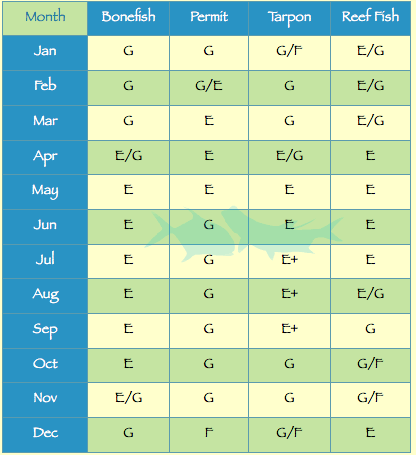
Our fish reside here 12 months of the year, plus the addition of a major tarpon migration in late summer. Any day of the year you can be assured that the fishery is diverse and abundant. Months tend to blend into one another. If our "best" month is a 10, then our "worst" month is an 8 1/2 or a 9. Again, it's the vagary of a passing front that has more impact than the time of year. These fronts possess two common characteristics: they are unpredictable and they tend to be short-lived. So practice your casting and come visit us and one of the world's premier saltwater destinations. January February March April May June July, August, and September October November December
Seafood Guide to Belize: Closed seasons, banned catches, size and catch limits, Special laws and permits. The complicated ecosystem of the reef supplies food and shelter to a huge variety of baitfish and small crustaceans that, in turn, attract larger predators. The reef also protects the shore-side protects the shore-sidefishery from the unmerciful wrath of the ocean. The-coral heads absorb the brunt of the pounding waves, which creates a tranquil setting in the flats even if the outside ocean is being pummeled by a storm. Belize's second virtue is its series of fresh-water rivers and brackish estuaries. Tarpon, snook, snapper, jacks and other species utilize these fertile waters for feeding and spawning purposes. The nutrient-rich rivers also dump a wealth of biomass into the ocean which is utilized by zooplankton, crustaceans and baitfish, providing a veritable smorgasbord for game fish. The reef and river/estuary system make an unbeatable combination. Why Non-Destructive Fishing Gear is best for BelizeWith a 240 mile long coastline, Belize has a rich history of boating, fishing, and swimming in , bountiful tropical waters. Some fishing practices date back to the Maya civilization. Today Belize’s fishing industry is a major productive sector of the economy, contributing US$10.7 million annually in revenue from seafood exports and providing jobs and other benefits for an estimated 15,000 Belizeans. Given the economic and cultural significance of fisheries in Belize, it is important to ensure the sustainability of the sector. One way is to utilize and harvest marine resources responsibly so that we can ensure healthy reefs and fish populations for generations to come. Belize has also taken important steps, such as establishing “replenishment zones”, protecting spawning aggregation sites and declaring open and closed seasons for products such as lobster and conch. There are many methods that Belizeans use to extract marine resources, but some are better than others. The gear described as “non-destructive” are those that have minimal impact on habitat and the creatures not being targeted for capture. Those non-destructive or “clean” gear reduce bycatch and prevent charismatic, keystone, and protected species from being unintentionally caught. Most Belizean fishermen rely on some of the oldest forms of fishing in the world, but as fish populations get harder to find, fishers are adjusting the gear they use. Below are some of the more responsible fishing gear used in Belize that have a low impact on the marine environment. For a full guide on the fishing gear used in Belize, check out our report here:
Hand lineHand line fishing or drop fishing is one of the oldest and most widely used forms of fishing throughout the world. It consists of tying a hook to a line with a weight on the end, baiting the hook with sprat, shrimp, or small fish, and throwing the line in the water. It gets its name because the line is not attached to a reel, it is simply held in the hand, and is sometimes tied around a plastic or wooden spool. Fishers will use different sized hooks depending on the type of fish that is being targeted. Multiple hooks can be tied to each line. Hand line fishers generally target snappers (yellow tail, red, schoolmaster), grouper, grunts, rockfish, jacks, or other finfish. They will drive out to patch coral heads in their skiff (panga) and fish for up to four days at a time. Hand line fishing is also the method of fishing used at fish spawning aggregation sites. Some fishers will use a hand line attached to a winch to fish in deep slope areas. This type of fishing is common all along the coast of Belize. Hand line fishers are required to have a fishing license with the Belize Fisheries Department. Hand line fishing is considered to be non-destructive because it only targets a few fish at a time to be caught. If a juvenile fish or an illegal species is caught, it can easily be removed from the line and put back into the water. As long as the line is not lost in the water and tangled on coral, it is not going to have a high impact on the environment around it.
“Raati” net (crawl net)The “raati” net gets its name from the Belizean kriol word for a large species of sea crab referred to as “raati”, and you guessed it – it’s used to catch blue crab (Callinectes sapidus) off of bridges or in shallow water. It is constructed around a metal frame, sometimes creatively using a bicycle wheel or a metal basket. Chicken skin or feet, cowhide, or other fleshy, tough meat is used as bait for the crabs. Blue crab is considered to be a lower class food and it is mostly fished for subsistence. However, it can sometimes be found for sale at fish markets. Raati nets are most commonly used in the Southern areas of Dangriga and Hopkins during the months of May to August when the seas are a bit rougher. There are currently no restrictions on raati net use in Belize. Because the raati net is used in areas where it won’t get snagged on live corals or unintended targets, it is considered non-destructive. Also, if immature crabs are caught, they can easily be thrown back into the water with little damage, allowing the crab to grow and reproduce at a later date. This is important to ensure that crab populations remain healthy for future generations.
Sling (trident)A sling (Hawaiian sling or trident) is a type of spear with rubber tubing that wraps around the wrist. It can vary in size, but 5.5 feet is a standard length. It is traditionally three-pronged and it is used to catch lionfish and other finfish. The fisher will pull the spear back, stretching the rubber tubing around their wrist, and then release the spear to shoot toward the target fish. Fishers who use a sling or trident to catch lionfish are allowed to use SCUBA gear; however, these are the only conditions under which SCUBA gear can be used for fishing in Belize. The sling, just as any other fishing gear, is not permitted for use in marine reserves. A sling is a highly targeted method of fishing meaning it has a very low impact on the environment. This makes it a responsible and non-destructive way to fish. Only the intended fish is caught, minimizing by-catch and making sure that juveniles can remain in the water to mature and reproduce. With fish stocks declining worldwide, it’s extremely important that fishermen in Belize continue to utilize these non-destructive gears to ensure the sustainability of our fish stocks, especially given our nation’s high dependence on fisheries for revenue, livelihoods, and sustenance. After all, fishing responsibly means our country will be able to fish forever! Note: These are only some of the non-destructive gear used in Belize. CLICK HERE for more information on fishing in Belize and San Pedro, including a list of local guides.CLICK HERE for a list of articles on fishing in Belize and off Ambergris Caye from magazines and sent in by our readers. They are full of excellent information, photographs, and tips.
Related Links: |




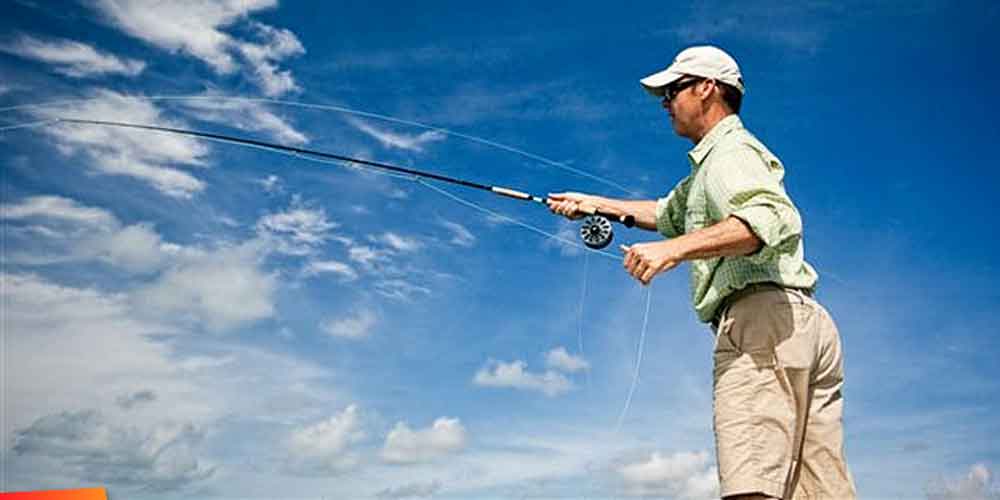
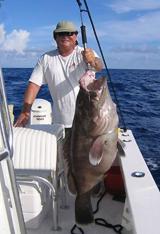







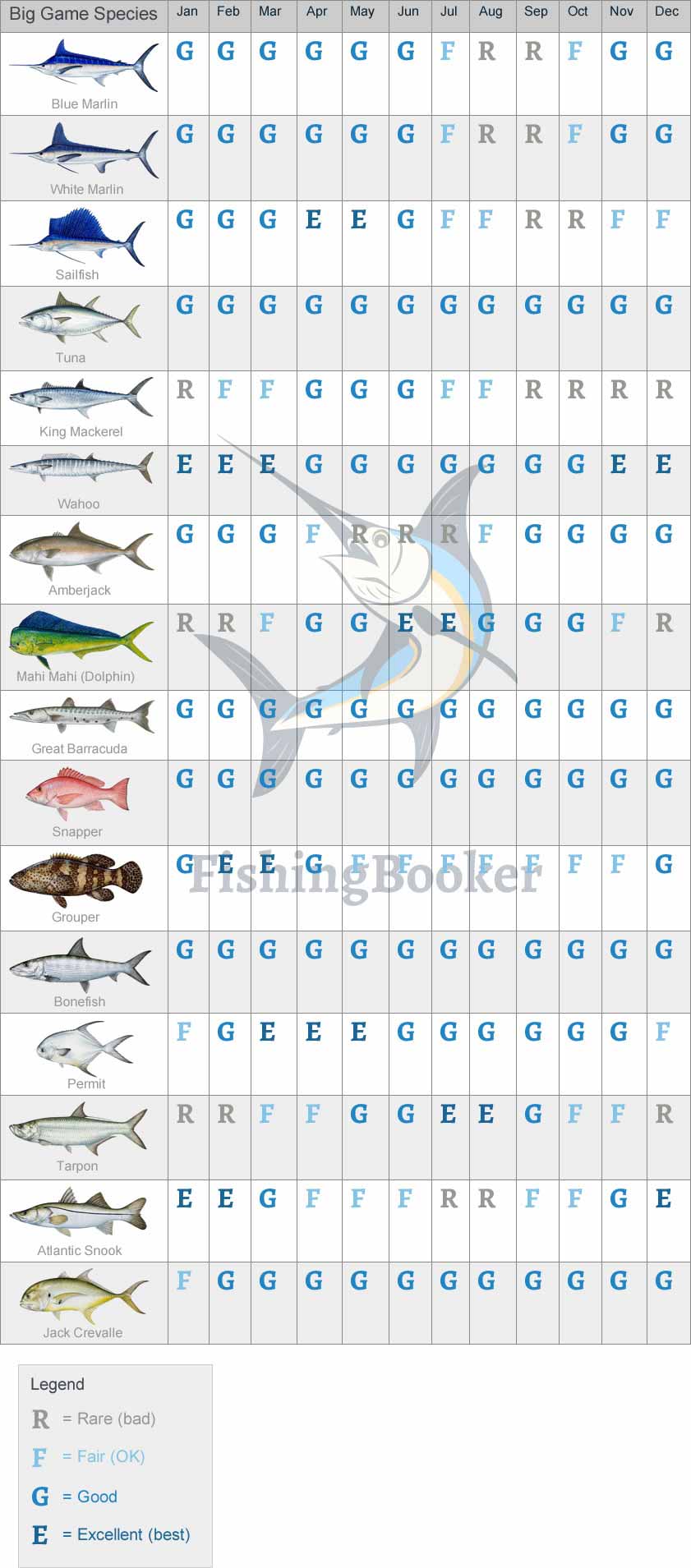

 The Environmental Conditions which make Belize an
Angler's Paradise: Belize has a unique combination of environmental factors which create the ideal habitat for a myriad of
saltwater game fish. Its most outstanding attribute is the Belizean
Barrier Reef, which is second in size only to the Great Barrier
Reef in northeastern Australia. Ten to forty miles off the coast,
an intricate chain of submerged islands and little cays provide the
ideal habitat for a shallow-water coral -ecosystem. Shallow-
water coral species demand a strict set of environmental criteria
in order to flourish. If undeviating variables- including precise
water temperature and specific water depth- are not present, the
formation of a reef is impossible. This is why large barrier reefs
are fairly uncommon.
The Environmental Conditions which make Belize an
Angler's Paradise: Belize has a unique combination of environmental factors which create the ideal habitat for a myriad of
saltwater game fish. Its most outstanding attribute is the Belizean
Barrier Reef, which is second in size only to the Great Barrier
Reef in northeastern Australia. Ten to forty miles off the coast,
an intricate chain of submerged islands and little cays provide the
ideal habitat for a shallow-water coral -ecosystem. Shallow-
water coral species demand a strict set of environmental criteria
in order to flourish. If undeviating variables- including precise
water temperature and specific water depth- are not present, the
formation of a reef is impossible. This is why large barrier reefs
are fairly uncommon.
 From the air, you can see the reef as an unbroken chain of white surf that stretches north along the eastern shore. Inside the reef the water is shallow with a blue tinge; outside the reef the water is deep and from the air is a dark royal blue. On very clear days, the reef appears as a narrow strip of yellow dividing the two shades of blue. Only near Ambergris Caye does the reef run anywhere near a populated coast. Offshore it is almost a solid wall of magnificent coral formations broken only by narrow channels called "quebradas". The reef is more than just decoration. Without it the island would not exist; as it serves as a breakwater protecting the beach from erosion and shelters the caye and its inhabitants. On the eastern side depths drop off rapidly to thousands of feet.
From the air, you can see the reef as an unbroken chain of white surf that stretches north along the eastern shore. Inside the reef the water is shallow with a blue tinge; outside the reef the water is deep and from the air is a dark royal blue. On very clear days, the reef appears as a narrow strip of yellow dividing the two shades of blue. Only near Ambergris Caye does the reef run anywhere near a populated coast. Offshore it is almost a solid wall of magnificent coral formations broken only by narrow channels called "quebradas". The reef is more than just decoration. Without it the island would not exist; as it serves as a breakwater protecting the beach from erosion and shelters the caye and its inhabitants. On the eastern side depths drop off rapidly to thousands of feet.

















